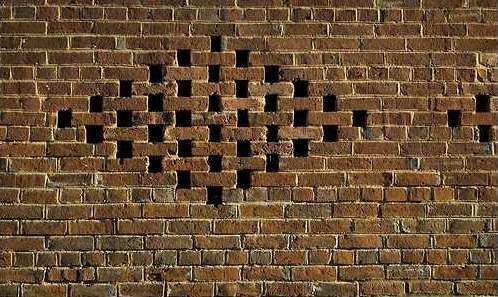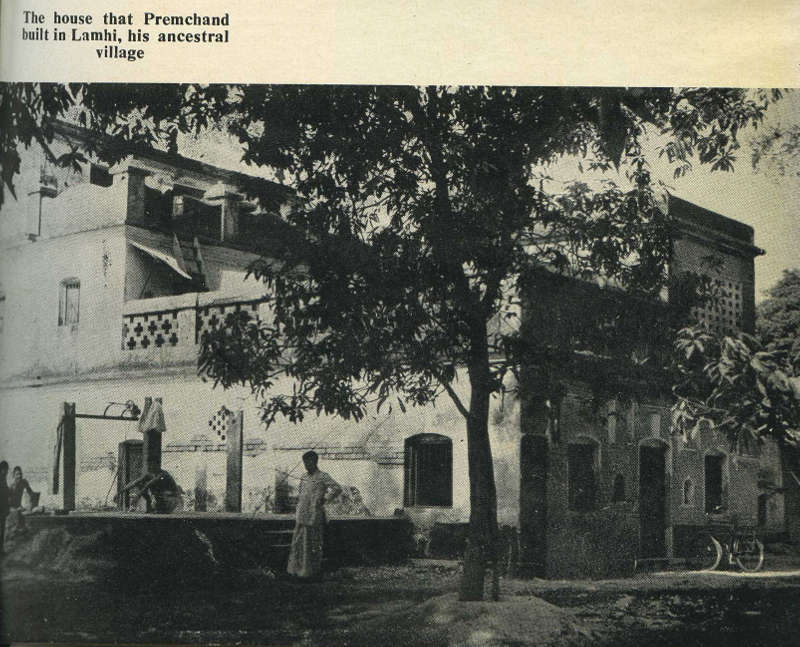FWP:
SETS == EXCLAMATION;
I AND
EYES {3,1}
FRIEND/ENEMY: {4,3}
GAZE: {10,12}
On the nature of the rauzan , 'crevice-work', see the discussion below.
In this verse the poet once again uses the 'I and X' structure; for more on the rhetorical implications of this, see {5,6}. The lover exclaims helplessly at his involvement with such a person: 'We, and that...!' [ham aur vuh]. His inability to find the right words is illustrated when he describes the beloved not only as grieved without a cause, but also as-- by juxtaposition at least-- as a 'friend(ly) enemy'. In case the word order is confusing, here's how it would go: shu((aa-e mihr se nigah kii tuhmat chashm-e rauzan par rakhtaa hai .
The beloved is so unreasonable that she blames the 'eye' of the crevice in the wall for the glance of the sun-ray. The commentators differ on exactly what this means: she blames the lover for spying on her (Nazm); she blames the crevice for casting the 'evil eye' (Hasrat); she blames the crevice for staring at her (Bekhud Dihlavi). But surely the basic idea is that she's utterly unreasonable: she's blaming an indisputably innocent, passive party (the rauzan ) for behavior by another probably innocent, passive party (the sun)-- behavior over which in any case the crevice-work has no control.
And yet-- since she blames the chashm-e rauzan , the rauzan does seem to have an eye (though perhaps only in the sense that the needle has an eye). Does this turn the rauzan into a voyeur, like the mirror and the lover? Maybe the beloved's beauty is such that even normally passive, neutral entities take on human-like desires and longings? Does the sun-ray actually seek her out, and aim itself toward her?
That phrase be-sabab ranj aashnaa dushman is the one that really gives us something to chew on in the verse. Since be-sabab can be either an adjective or an adverb, the beloved can be either a 'causelessly grief-friendly enemy' (there's no reason for her hostile cultivation of grief), or a 'causeless-grief-friendly enemy' (she hostilely cultivates groundless, unreasonable grief). And someone like her, of course, can perfectly well be both at once.
In principle, aashnaa can be either an adjective or a noun, but its mediating grammatical position here (between two nouns that have to be connected) requires it to be an adjective. Thus the beloved is seemingly described as a 'friendly enemy', and the piquant effect is heightened by the noun reading 'friend enemy' that makes itself strongly felt as well. (I thank Vasmi Abidi for his useful discussion of this point.)
The commentators generally take it as a given that the beloved blames
the lover for something specifically related to the situation described in
the second line-- for staring, for spying, for intruding, for permitting others
to stare or spy or intrude. But it's also quite possible that her treatment
of the hapless crevice-work is simply an illustration of her jealous temperament in general, and of the similarly jealous way in which she treats her lovers.
ABOUT CREVICE-WORK ( rauzan ): The lover's example of the beloved's unreasonableness involves the rauzan , the 'crevice-work in the wall', Although 'crevice-work' is the only descriptive term I can think of in English, it's not very satisfactory, because a 'crevice' sounds tiny and accidental, a sign of sloppy construction or deliberate tampering. As used in the Urdu ghazal, a rauzan is an architectural feature common in brick-built structures in South Asia. It is a small ventilation grill made by spacing a group of bricks in a small patch of wall so that symmetrical gaps, usually one-third of a brick-length wide, are left between them. These holes are generally squarish, and are arranged in a symmetrical, even decorative, geometrical pattern, often a diamond. For privacy and better ventilation, they are usually placed high on the wall, so that only sky can be seen through them; they're definitely not meant to be small windows. Other verses that use the imagery of the rauzan : {33,8x}; {64,4}; {87,3}; {87,4}; {111,4}; {113,2}; {113,4}; {113,6}; {195,3x}; {227,3} // {240x,6}; {244x,7}; {266x,2}; {284x,3}
On the use of a wad of cotton ( punbah ) in a rauzan , see {87,4}.
Here's a perfectly good rauzan , in a barn wall in Nashville, Tennessee:

And there was at least one rauzan in the house that Premchand built for his family, as Madan Gopal has shown us:

Nazm:
That is, seeing the ray that comes through the crevice, she becomes grieved without cause: 'It was your glance, you must have peeked!'. I've been forced to consort with such a suspicious person. (64-65)
== Nazm page 64; Nazm page 65